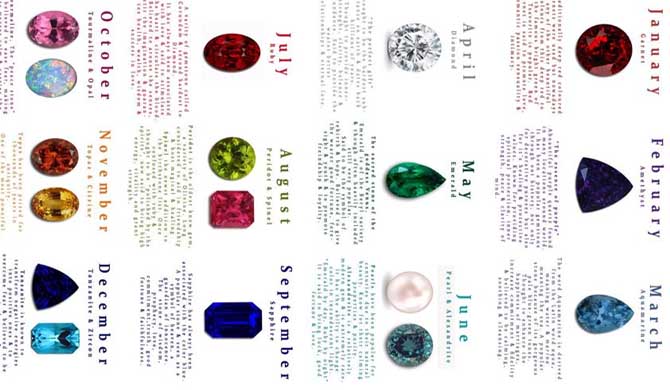Spinel has recently been added to the official list of birthstones by the American Gem Trade Association (AGTA) and Jewelers of America (JA) and will now share the month of August with the stunning yellow/green gemstone Peridot. This is the third recent addition to the modern list since it was created in 1912.

Faceted African Spinel From The Rare Gemstone Company
“At certain moments in history, when there is a strong call
from gem enthusiasts to expand the list of official birthstones, Jewelers
of America believes in recognizing the importance of historically
significant gemstones and giving gemstone lovers a choice that suits their
preferences,” said JA President and CEO David Bonaparte.
AGTA CEO Doug Hucker said, “Ancient gemstone merchants revered Spinel, and it was widely sought after by royalty. It was then known as ‘balas ruby.’ It wasn’t until the late 18th century that we developed the technology acumen necessary to distinguish spinel as a separate mineral from ruby. We are very excited to announce it as the newest member of the official birthstone list.”
A favorite among dealers and collectors due to its
wonderful brilliance and sparkle, hardness and wide range of stunning colors. Known mainly for its beautiful rich reds, Spinel can also be found in many
other gorgeous pastel shades of purple and pink such as those discovered in
Umba in Tanzania in the late 1990’s which are very unique. Recently found is a
striking hot pink tinged with orange from Burma. Wonderful shades of blue have
also been discovered, for example Cobalt Spinel, found in Sri Lanka and
Vietnam.
Did you know that, the Burmese believe that because Spinel is so perfect, they refer to it as “Nat Thwe” or “polished by the spirits”
Like Garnet and Diamond, Spinel is singly refractive and has
the same physical properties in all crystal directions, it has octahedron
crystals. Spinel also has a similar structure to Ruby and is found in many of
the same locations, leading to great confusion in gemstone history as they have
often been confused. Ruby is aluminum oxide, while Spinel is magnesium aluminum
oxide formed when impure limestone is altered by heat and pressure. Both red/
pink Spinel and Ruby get their reddish color from impurities of chromium.

The source of both gems is said to be Myanmar, Burma. The Burmese have always recognized Spinel as its own species, but beyond, Spinel
was referred to as "Balas Ruby" for hundreds of years. It wasn’t
until 1783 when Mineralogist Jean Baptiste Louis Rome de Lisle identified it as
a different mineral altogether. In Ancient times, some mines produced some exceptionally large crystals, some were collected by kings and emperors and became part of there treasured crowned jewels. Some of these “Rubies” are now actually Spinels.
FAMOUS EXAMPLES INCLUDE
“The Black Prince’s Ruby” A 170 carat crimson red cabochon Spinel set into the
cross pattee in the Imperial State Crown in the British Crown Jewels. The stone
is one of the oldest parts of the crown Jewels. It first appeared in historical
records of fourteenth-century Spain, and has been owned by a succession of
Moorish and Spanish Kings before Edward, Prince of Wales, the “Black Prince”,
received the stone in 1367 as payment for a battle victory.
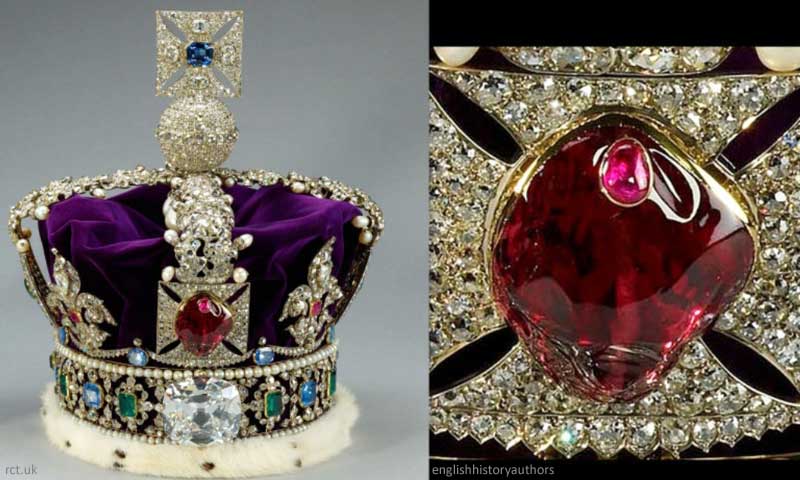
The stone was not actually set into the Imperial State Crown
until 1685 for the coronation of King James 2nd. Her Majesty Queen Elizabeth
2nd also wore the crown for her was coronation in June 1953 and she wears it annually at the
Opening of Parliament. The crown is currently on display in the Tower of
London.
“The Timur Ruby” An un-faceted, unpolished 361 carat red Spinel presented as a
gift to Queen Victoria by The East India Company in 1851 and set into a
necklace by Garrards in 1853 as part of the British Crown Jewels and named
after the ruler Timur (or Tamerlane) the great tartar conqueror. Until 1851, it
was regarded as the largest known “Ruby” in the world. It is one of the most
historically significant jewels that the Queen actually owns and is currently
ranked as second in size behind the 398.72 carat Spinel in the Imperial
Russian Crown.

The necklace has never actually been worn by any British
Royal. Nevertheless, it is one of their greatest heirlooms. This stone has a
very interesting and complicated history, parts of it can actually be derived
from the stone itself, for some of the owners inscribed their names and/or
additional inscriptions on it. This too, is currently on display in the Tower
of London.
The Imperial Crown of Russia or Great Imperial Crown sports a
stunning 398.72-carat red Spinel, believed to be the largest red Spinel in the
world. It was worn by the Emperors of Russia until the abolition of the
monarchy in 1917. It was commissioned by Catherine the Great in 1763 for her
coronation and made by the court jeweler Ekart and Jérémie Pauzié using the
Spinel from the historic stones of the Russian Diamond Collection. The Spinel
was brought to Russia by Nicholas Spafary the Russian envoy to China from 1675
to 1678 and was last used at the coronation of Nicholas II. The crown is
currently on display in the Moscow Kremlin Armory State Diamond Fund.
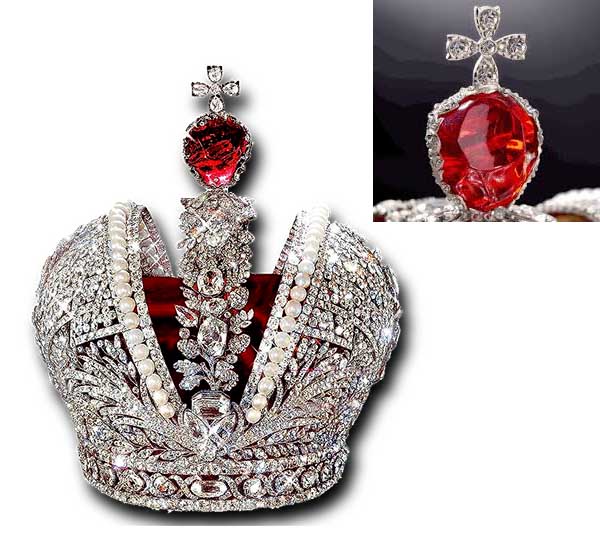
OTHER FAMOUS SPINELS INCLUDE
Samarian Spinel – at 500 carats, this Spinel in the
Iranian Crown Jewels is thought to be the largest “fine” Spinel in the world.
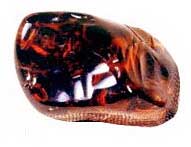
Carew Spinel – an un-faceted 133.5 carat stone,
inscribed with the names of the Mughal Emperors. Bequeathed to the Victoria
& Albert Museum by Lady Carew in 1922.

Mogul Names Necklace – An imperial necklace set with 11
polished Spinel beads from the Pamir region weighing a total of 1,131.59
carats. Three of the beads are engraved with the Emperors names.
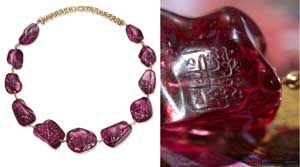
THE HEALING PROPERTIES OF SPINEL
Believed to protect its owner from harm and soothe
sadness, to stimulate strength, promote physical vitality and bring high
energy. It is said that Spinel can aid in the speed of recovery from all
illness and disease associated with movement. In the mental realm, it is used
to help reduce forgetfulness.
ANNIVERSARIES
Spinel is a celebratory gem for 22nd Wedding Anniversary.





